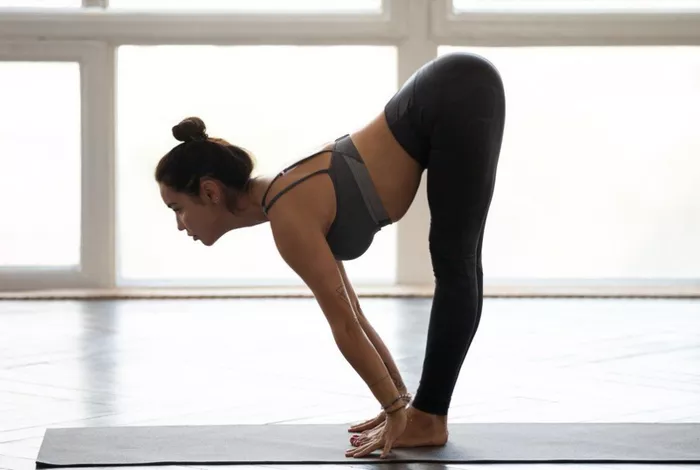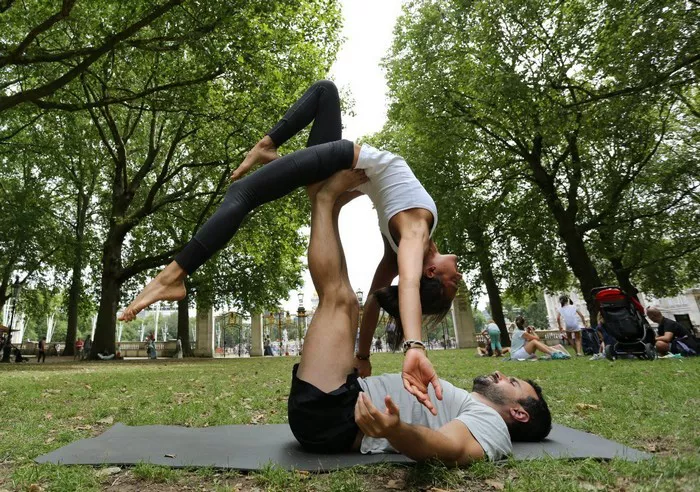Iyengar Yoga is a globally respected form of yoga known for its focus on alignment, precision, and the use of props. Named after its founder, B.K.S. Iyengar, this yoga style has earned acclaim not only for its physical benefits but also for its philosophical depth and therapeutic applications. Practiced by people of all ages and abilities, Iyengar Yoga brings a systematic approach to the ancient discipline of yoga. Understanding its origins is key to appreciating its development and widespread influence.
The Roots of Yoga in India
Where Was Iyengar Yoga Invented? Before diving into Iyengar Yoga specifically, it’s essential to recognize the broader context of yoga’s origins. Yoga is an ancient practice that dates back thousands of years in India. Rooted in the Vedic traditions, yoga was initially a spiritual discipline aimed at achieving union with the divine. Over time, it evolved to include physical postures (asanas), breath control (pranayama), and meditation. This evolution set the stage for the emergence of various schools of yoga, including Iyengar Yoga.
The Life and Legacy of B.K.S. Iyengar
Bellur Krishnamachar Sundararaja Iyengar, commonly known as B.K.S. Iyengar, was born on December 14, 1918, in Bellur, a small village in the Indian state of Karnataka. Suffering from various health issues in his early life, Iyengar turned to yoga as a means of healing. Under the guidance of his brother-in-law and renowned yogi, T. Krishnamacharya, Iyengar began his formal training in Mysore. This period was pivotal in shaping his dedication and innovations in yoga practice.
The Birthplace of Iyengar Yoga: Pune, India
Although B.K.S. Iyengar was born in Karnataka and trained in Mysore, the city most closely associated with the invention and development of Iyengar Yoga is Pune, located in the state of Maharashtra. It was in Pune that Iyengar established the Ramamani Iyengar Memorial Yoga Institute (RIMYI) in 1975. This institute became the epicenter of Iyengar Yoga, where he codified his teachings, trained students, and published seminal works such as “Light on Yoga.”
Key Milestones in Pune
- 1940s-1950s: Iyengar began teaching yoga in Pune, gradually developing his own distinct style.
- 1966: Publication of “Light on Yoga,” a landmark book that brought international attention to his methods.
- 1975: Opening of RIMYI, named in memory of his wife, which formalized Iyengar Yoga as a structured practice.
- 1980s and beyond: Global expansion as students from around the world traveled to Pune to study directly with Iyengar.
These milestones illustrate how Pune transformed from a regional hub into a global center for Iyengar Yoga.
The Philosophy Behind Iyengar Yoga
Iyengar Yoga is grounded in the traditional philosophy of Patanjali’s Yoga Sutras. What distinguishes it is its emphasis on integrating philosophy with precise physical practice. The use of props such as blocks, belts, and bolsters is not merely for convenience but serves a deeper purpose: enabling practitioners to experience the full benefit of each posture regardless of physical limitations. In this way, Iyengar Yoga makes classical yoga accessible and inclusive.
Unique Features of Iyengar Yoga
- Alignment: Every posture is practiced with keen attention to the anatomical structure of the body.
- Precision: Movements are deliberate and exact, encouraging mindfulness.
- Timing: Poses are held longer to cultivate strength and stability.
- Props: Equipment is used to facilitate correct posture and prevent injury.
These characteristics distinguish Iyengar Yoga from other forms and highlight its therapeutic potential.
Global Influence and Recognition
The teachings that began in Pune have now reached every corner of the world. Iyengar Yoga is practiced in over 70 countries, and certified Iyengar teachers undergo rigorous training to maintain high standards. B.K.S. Iyengar himself traveled extensively, conducting workshops and lectures that brought greater awareness to Indian yoga traditions. His influence extended to celebrities, medical professionals, and spiritual seekers alike, elevating the status of yoga globally.
The Role of RIMYI Today
The Ramamani Iyengar Memorial Yoga Institute continues to be a beacon for yoga practitioners worldwide. Now managed by his children and grandchildren, the institute upholds B.K.S. Iyengar’s legacy through teacher training programs, workshops, and community outreach. Pune remains a pilgrimage site for yoga enthusiasts who wish to study the authentic teachings of Iyengar Yoga in its birthplace.
Comparing Pune and Mysore in Yoga History
While Pune is the birthplace of Iyengar Yoga, Mysore is also significant in the history of modern yoga. Mysore was home to the yoga school of T. Krishnamacharya, who trained many influential teachers including Iyengar and Pattabhi Jois (founder of Ashtanga Yoga). The distinction lies in how each city contributed uniquely to yoga’s evolution:
- Mysore: Birthplace of modern vinyasa styles and foundational training ground.
- Pune: Home of Iyengar Yoga, where the style matured and gained structure.
Understanding this relationship enhances one’s appreciation of how different yoga forms emerged from common roots but took different paths.
Why Pune Was the Ideal Setting
Pune’s intellectual and cultural climate made it an ideal location for Iyengar Yoga to flourish. Known for its educational institutions and openness to progressive ideas, Pune provided a receptive audience for Iyengar’s teachings. Moreover, its geographic proximity to Mumbai allowed for greater exposure and networking, aiding in the early spread of Iyengar Yoga within India and abroad.
Contributions to Therapeutic Yoga
Iyengar Yoga is especially revered for its therapeutic applications. By focusing on alignment and incorporating props, it enables people with injuries, disabilities, or chronic conditions to practice safely. In Pune, medical professionals often collaborated with Iyengar to study the effects of yoga on various ailments. This integration of yoga into healthcare settings marked a significant development and contributed to yoga’s acceptance in the medical community.
The Evolution of Teaching Methods
B.K.S. Iyengar revolutionized the way yoga was taught. Prior to him, yoga instruction was largely oral and individualized. Iyengar introduced a classroom format, clear sequencing, and structured curriculum. In Pune, these innovations were tested, refined, and eventually adopted worldwide. His pedagogical methods emphasized demonstration, observation, and correction, setting a new standard for yoga education.
Legacy and Succession
After B.K.S. Iyengar’s passing in 2014, his daughter Geeta and son Prashant Iyengar continued his work with dedication. Both have contributed extensively to the literature and methodology of Iyengar Yoga. Today, his granddaughter Abhijata Iyengar plays a central role in teaching and administrative responsibilities at RIMYI. This generational transition ensures that Pune remains the heart of Iyengar Yoga.
Visiting Pune as a Yoga Student
For those serious about deepening their practice, a visit to Pune is often seen as essential. Students must apply in advance and meet certain prerequisites to study at RIMYI. The institute offers a range of classes, from general to advanced, and emphasizes discipline and commitment. A visit is not only educational but also a deeply transformative experience for many practitioners.
Conclusion
Iyengar Yoga, with its origin in Pune, India, represents a perfect blend of traditional wisdom and modern methodology. From its philosophical foundations to its therapeutic applications, this style of yoga continues to transform lives around the world. Pune remains the spiritual and practical center of this tradition, where the legacy of B.K.S. Iyengar lives on. Understanding where and how Iyengar Yoga was invented enriches the practice and deepens one’s connection to this profound discipline.
Related Topics:












